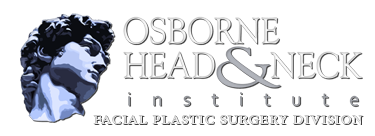Many people who have undergone a rhinoplasty may be unhappy with the aesthetic and/or functional results of their procedure, and may seek additional surgery to correct their problem in order to achieve the results they desire. Unsatisfactory results may occur as a result of a complicated condition, an inexperienced surgeon, or simply due to the patient’s healing techniques.
Revision rhinoplasty, also known as secondary rhinoplasty, is a complicated procedure that is most successfully performed by a rhinoplasty specialist to reshape or resize the nose after an initial procedure.
Some of the problems patients complain of after their initial rhinoplasty procedure include:
- Pinched tip
- Pulled up nostrils
- Creases around the nostrils
- Scooped out profile
- Breathing difficulties
These problems can range from minor imperfections to severe deformities. It is important to choose a highly skilled surgeon who specializes in revision surgery in order to achieve your desired results during the secondary procedure. Dr. Hamilton strives to help patients achieve the highest level of satisfaction from their rhinoplasty and will do his/her best to produce the results that the patient desires.
Candidates for Revision Rhinoplasty
Anyone who is unhappy with the results of their initial rhinoplasty procedure may be a candidate for revision rhinoplasty. Patients should discuss their initial procedure with either their original surgeon or a different one in order to determine the new goals for revision. It is also important for patients to be both emotionally and financially prepared for additional surgery.
Dr. Hamilton will determine whether or not revision surgery is a possibility for you after discussing your goals for surgery and performing a physical examination.
Revision Rhinoplasty Procedure
The revision rhinoplasty procedure is usually performed on an outpatient basis under deep sedation or general anesthesia to help reduce any potential discomfort. Revision rhinoplasty is usually performed using an open technique, allowing for greater visualization of the nasal cavity because the already-reshaped bone and cartilage may be more difficult to sculpt.
In cases where reshaping is difficult, a cartilage graft from the nasal septum, ear or rib may be required. Injectable fillers may also be used to correct small defects after the initial procedure, although use of the patient’s own cartilage is preferred. The entire procedure usually takes two and a half to four hours to perform.
Recovery from Revision Rhinoplasty
After the revision rhinoplasty procedure, patients will usually experience bruising and swelling for five to seven days, along with some mild pain that can be managed with medication prescribed by your doctor. Once bruising and swelling subside, patients can usually return to work and other regular activities. The nose will continue to heal and may change slightly in appearance over the course of a year after surgery, when full results will be visible.
Initial results of the revision procedure will be noticeable right away, but will continue to improve as swelling subsides and the nose heals. It is important for patients to wait until full results appear before deeming their procedure a success.
Risks and Complications
Revision rhinoplasty carries the same risks associated with the initial rhinoplasty procedure, but also involves thicker skin, scar tissue and less cartilage within the nose. The patient’s airway may also have been affected by the initial procedure, which makes revision surgery more difficult to perform.
It is important for patients to understand the risks associated with this procedure and to maintain realistic expectations for their revision rhinoplasty. The best results are achieved by choosing a highly skilled and experienced surgeon to perform your revision surgery, and by maintaining open communication with your doctor.
MEET our doctors TODAY. IN-OFFICE & VIDEO
APPOINTMENTS AVAILABLE
